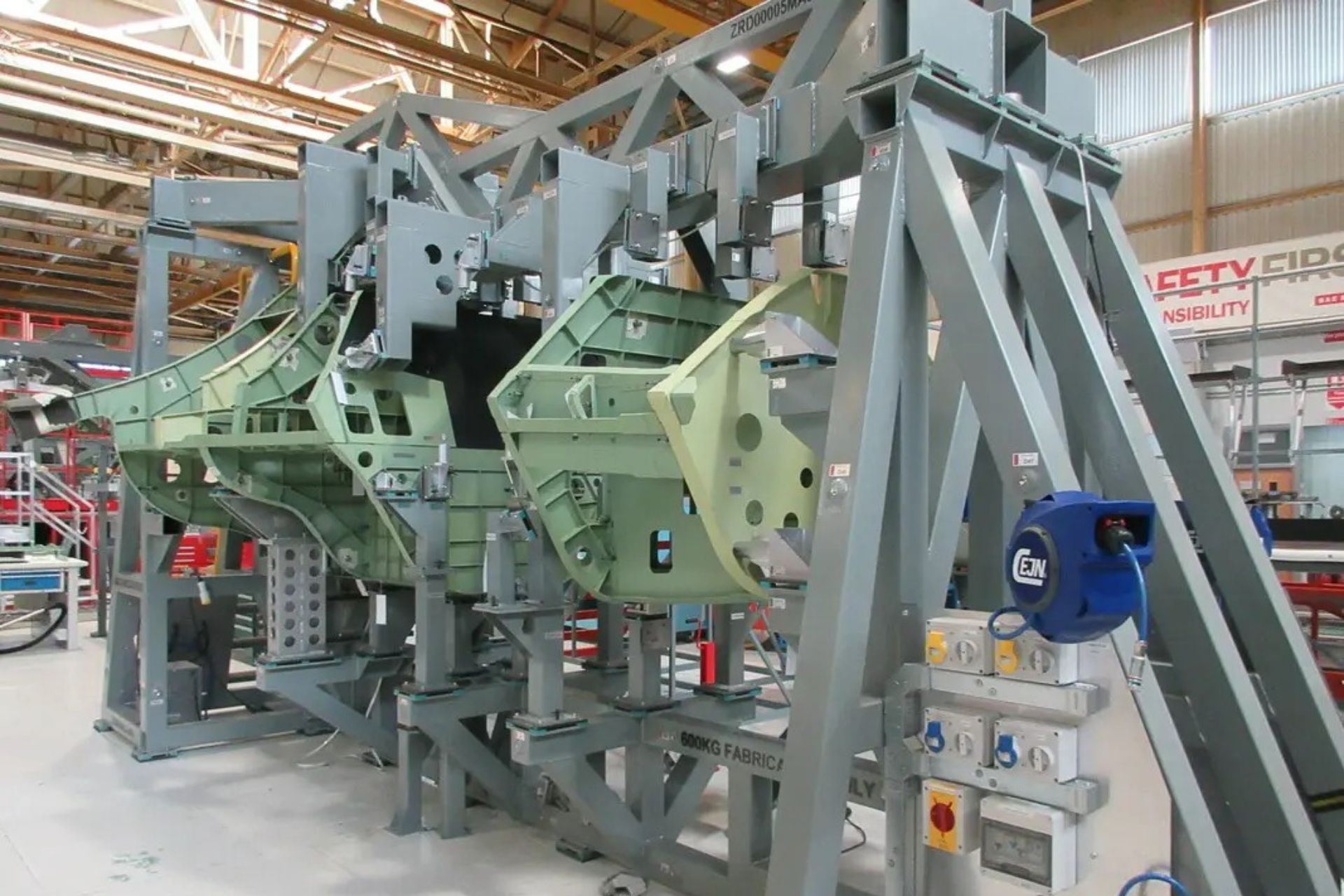Breaking News
UK's First Crewed Combat Air Demonstrator in 40 Years Takes Shape.
The manufacturing and assembly of the main structure of the UK's first crewed combat air demonstrator in a generation are currently underway, according to a statement released by the UK's leading defense industry partners on Wednesday, August 7, 2024. BAE Systems, Rolls-Royce, MBDA UK, and the UK Ministry of Defence are making significant progress in developing a piloted supersonic aircraft designed to test a range of new technologies, including stealth-compatible features. The aircraft is expected to fly within the next three years.
Follow Army Recognition on Google News at this link

The UK has officially commenced the production of its initial crewed combat air demonstrator for the first time in 40 years (Picture source: Rolls-Royce)
First announced by the UK government in July 2022, the flying demonstrator now has more than half of its weight, including the fuselage and wings, under construction. This progress is attributed to the expertise of the UK's world-class defense industry and the use of innovative digital techniques and transformative processes, including advanced manufacturing technologies, virtual simulators, and digital rigs.
The flying demonstrator provides invaluable data and lessons to the UK industry to support the introduction of a new combat aircraft from 2035, known as Tempest. Andy Higginson, Senior Vice President of Rolls-Royce for Manufacturing, Assembly, and Test, highlighted the importance of this project for the development of national skills and advanced technologies, as well as for supporting apprentices, graduates, and mid-career professionals.
Air Commodore Martin Lowe, Director of the Future Combat Air Systems Programme at the UK Ministry of Defence, stated that the demonstrator helps them understand the advanced technologies required to produce a sixth-generation fighter jet. The rapid progress made is largely due to a new generation of engineering specialists using innovative manufacturing solutions.
Experts at BAE Systems are employing additive manufacturing processes and technologies such as 3D printing to develop significant structural parts of the aircraft more quickly and at lower cost. The use of Hot Isostatic Press (HIP) technology, which employs extreme heat and pressure to create solid metal parts in any required shape, reduces manufacturing time and material waste.
In Warton, Lancashire, test pilots from BAE Systems, Rolls-Royce, and the Royal Air Force (RAF) have accumulated over 215 hours of flight in a bespoke simulator, providing crucial evidence to support the aircraft's design and future flight trials, enabling pilots to become familiar with flying the aircraft years before its first flight.
BAE Systems' engineers are also using a range of digital simulators and rigs to test cockpit conditions such as heating, cooling, and oxygen supply without needing a physical environmental rig. MBDA is collaborating with BAE Systems to test digital weapon integration processes for the demonstrator, aiming to prove through test and evaluation that they will reduce the time and cost of weapon integration.
Rolls-Royce is set to deliver two EJ200 engines for installation in the flying demonstrator after integration testing last year. These engines, provided by the UK Ministry of Defence, will be delivered to BAE Systems within the next 12 months as this collaborative program continues to progress.
This range of innovative technologies will demonstrate and test key elements of the next-generation combat air design, as well as the skills, tools, processes, and techniques needed to develop the Tempest, which will be delivered through the Global Combat Air Programme, involving the UK, Italy, and Japan.


























